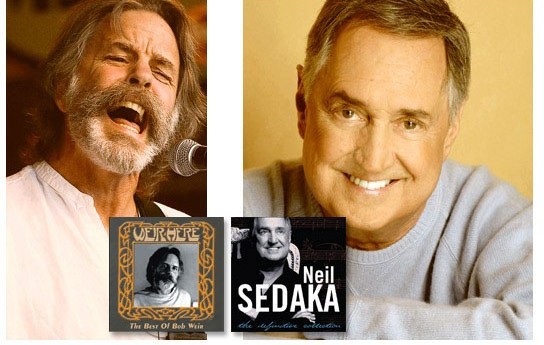
BOB WEIR
Bob Weir, born in Atherton, CA on October 16, 1947, was adopted by a wealthy and devoted San Francisco family. In his youth, severe and undiagnosed dyslexia led to trouble, and Weir’s parents sent him to boarding school. Weir had other plans, however, and ran away during his junior year. “My parents instilled in me the importance of applying myself. That all stuck. A couple of years later, I started bringing home gold records.”
Weir returned to the Bay Area, where he explored the growing folk scene and met Jerry Garcia, Jefferson Airplane guitarist Jorma Kaukonen and New Riders of the Purple Sage founder David Nelson. Weir played guitar with a series of jug bands before joining Garcia’s band the Warlocks in 1965. The Warlocks played at writer and Merry Prankster Ken Kesey’s Electric Kool-Aid Acid Test parties, where revelers experimented with LSD and other hallucinogens. The Warlocks eventually became the Grateful Dead and so began the long, strange trip.
The Dead’s sound, a psychedelic fusion of musical genres, included lengthy improvisation (they once performed a two-set soundcheck at Watkins Glen). Weir developed his unique rhythm style playing between the up-beat, articulated lead guitar of Jerry Garcia and Phil Lesh’s innovative bass lines.
After Jerry Garcia’s death in 1995, Weir formed RatDog. With an ever-changing lineup, RatDog toured relentlessly, playing small theaters and clubs with new Weir compositions and reworked Dead songs. In September 2000, they released their first studio album, Evening Moods, on Arista/Grateful Dead Records, and in 2001 released Live at Roseland; Weir released Weir Here: The Best of Bob Weir, a compilation of both live and studio recordings in 2004. The band’s current lineup includes two original members, Bob Weir and Jay Lane on drums; they are joined by Kenny Brooks on saxophone and touchpad, Jeff Chimenti on keyboards, Mark Karen on guitars and Robin Sylvester on bass, with vocals by all.
RatDog will play a busy festival season: Bonnaroo in mid-June, the All Good Festival in July and the Gathering of the Vibes in August, to name a few. RatDog’s live CD series, started in 2003, will continue with this year’s summer tour, but has no immediate studio plans.
Weir contends that recording an album was no longer cost-effective once fans started filesharing. Today, he says, musicians survive largely by touring, which ultimately will mean fewer individuals can become professional musicians. Although the Grateful Dead pioneered the taper movement, he points out that taping was personal, and tapes were traded literally hand-to-hand. In addition, he notes, “there are only so many generations down before the tape was inaudible.” The digital revolution has changed both of those paradigms.
Socially, he points out, the parallels between the Summer of Love and today’s environment exactly 40 years later are striking: “We unseated a despot to end an unjust war,” Weir notes, “and we may have to do that again.” This time, however, the movement must be “cross-demographic, because today’s youth movement doesn’t have the same numbers that we had.” Advice from this survivor: “Question authority,” Weir says, “and vote.” Tune in, turn on, and drop in.
NEIL SEDAKA
Neil Sedaka’s professional career spans roughly 50 years, one of the longest in American music history. One of the original creators of the “Brill Building Sound” which launched an influx of starry-eyed, romantic pop ballads, his chart-toppers like “Breaking Up Is Hard To Do,” “Calendar Girl,” “Happy Birthday Sweet Sixteen,” “Next Door To An Angel,” and “Stairway to Heaven” laid the foundation for contemporary American pop music—in fact, he’s written over 1,000 songs.
Neil Diamond, Connie Francis, Tom Jones, and the Fifth Dimension can all thank Neil Sedaka for hits—the Captain and Tennille won a Record of the Year Grammy with their version of “Love Will Keep Us Together.” Even Elvis Presley and Frank Sinatra performed Sedaka hits from the 1970s.
Sedaka was born in Brooklyn, NY, on March 13, 1939. By eight he had already begun his rigorous classical piano training at the renowned Juilliard School of Music, practicing five hours a day. By 16 he was voted one of the top classical pianists in New York City high schools, and recorded several singles before age 18.
While still a teenager, Sedaka met lyricist Howard Greenfield and the two began a musical partnership which lasted thirty years and sold over 25 million records. Sedaka noted, “For a long time, we wrote a song a day.” Inducted into the Songwriter’s Hall of Fame, he’s earned a star on the Hollywood Walk of Fame and a street named after him in Brooklyn.
In 2003 Sedaka released Brighton Beach Memories: Neil Sedaka Sings Yiddish on Sameach Records. The same year, he released, The Show Goes On, an album of new material which featured music and lyrics written solely by Sedaka. His influence can still be heard on the Billboard charts: Clay Aiken’s version of “Solitaire” reached #4 on the Hot 100 Singles chart as recently as 2004.
Sedaka’s latest venture, the recently released compilation album, The Definitive Collection, presents an assortment of hits from decades past as well as a couple of unreleased tracks. Sedaka continues to revamp and reissue his body of work, performs some 30 concerts a year, and has a new musical comedy, Breaking Up Is Hard to Do, with 12 Neil Sedaka songs. He remains an essential and present figure in American music. Sedaka himself says, “Fifty years is seven lifetimes. People say it goes fast, but this is slow and beautiful.” E
![]()
Elmore: What are you listening to right now?
Bob Weir: I listen on iTunes. I’ve got Coltrane’s African Nights, Stravinsky’s Le Sacred du Printemps, and some early Beatles.
Neil Sedaka: Christina Aguilera, who I think is brilliant; John Mayer, a genius; Corinne Bailey Rae, the most exciting newcomer for many years, and Snow Patrol, they’re fabulous.
EM: What was the first record you ever bought?
BW: “Tutti Frutti,” by Little Richard. I was probably about nine.
NS: I was three and my mother bought me the Moylan Sisters. Don’t even ask what song it was. I loved the harmony; I was always fascinated with part singing, that’s why I started a doo wop group in high school in Brighton Beach, the Tokens. The Moylan Sisters was a 78, and I remember running to the record player and slipping, and it broke it into a million pieces, and my mother went back to King’s Highway and bought me another copy, and that wasn’t easy, because my father was a taxi driver—Maxie the taxi.
EM: Where do you buy your music now?
BW: I don’t. I download from iTunes, kind of hit-or-miss.
NS: Borders, across the street. I don’t download, but my secretary now downloads for me. I go to record stores; I’m from the old school.
EM: What was the first instrument you played?
BW: Piano. Some friends of my parents moved to Europe for a while, and rather than put it in storage, they left it with my parents, who insisted I take piano lessons. I’m dyslexic, so reading music was impossible. But we had live-in help, and one taught me this boogie, and I took off from there.
NS: I was seven, and a neighbor had a piano, and I used to be able to pick out by ear things that I had heard on the radio, with one finger.
EM: What brought you to the instrument you now play?
BW: The friends came back from Europe and took their piano back, and I took up the trumpet. Very soon I was required to practice outside, which didn’t sit well with the neighbors. When I turned 12 or 13, I took up the guitar, which was OK because I could play it in my room.
NS: I really only play keyboard instruments. I went to Juilliard and studied classical music for 14 years, and had every intention of being a concert pianist. I still play chamber music with friends at home; I love chamber music.
EM: What musician influenced you most?
BW: There were probably two. Stravinsky or McCoy Tyner. We had a fire-eating lead guitar in the Grateful Dead. My passion was for being there, with the right tone, and the surprises of innovation.
NS: George Gershwin, because he could write pop and classical, and Frank Loesser, who wrote words and music brilliantly, Jerome Kern, Rodgers and Hammerstein, Rodgers and Hart, Irving Berlin. These are pre-rock and roll, and they’re my heroes.
EM: Who would you like to write with that you haven’t?
BW: Dylan of course. Does anybody answer anything different?
NS: Snow Patrol said that they would have me sing on their next record, and I would like to write one song with them. It would be nice to do something with Fountains of Wayne.
EM: What was the song or event that made you realize you wanted to be in music?
BW:When I learned to tune in a radio station and heard all kinds of music. I was probably born for it. I left home on the Kesey bus when I was 18.
NS: In high school there was a two performance variety show, at the beginning of rock ‘n’ roll. I was a freshman, about 15, and I wrote a song, “Mr. Moon,” that was a kind of slow, bump-and-grind tempo. The kids were going crazy, and the principal forbid me to do it at the second performance—it was too raunchy. If you heard it today, it’s meek and fragile, it’s nothing. The children got together and signed a petition that they wanted “Mr. Moon” back again. Then I was a hero in school, I could go with the leather set and the people with the duck’s ass haircut—I was a big shot.
EM: Who would you like in your rock and roll heaven band?
BW: Jerry on guitar, Paul McCartney on bass, McCoy Tyner on piano; Coltrane on sax, Miles on trumpet; on ‘bone, Joshua Roseman. For a drummer, I’m comfortable with my current drummer, Jay Lane. That band would be a jazz MO, we’d take it for a little walk in the woods.
NS: Certainly Elton on piano, Lee Ritenour on guitar. I’ve played with some great drummers over the years, but I’m having a senior moment. On bass, Leland Sklar, I loved the rhythm section for James Taylor. Jim Horn played the sax solo on “Laughter in the Rain,” he’s one of the greats. Melinda Doolittle and that gorgeous Jordin Sparks, from American Idol on backup.
EM: What’s your desert island CD?
BW: I’d go nuts. I’d rather listen to the wind.
NS: I’d make up my own CD with the Rolling Stones, Billy Joel, Elton John, Fleetwood Mac, Stevie Wonder, B.B. King. Of existing CDs, I’d take Carol King’s Tapestry. I used to date her in high school. We were close, and we’re from the Brill Building, both of us. She broke through first and moved to California, she wrote these great songs, and when I heard her I said, “I could do that!”


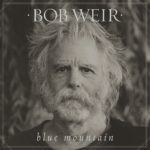
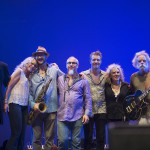
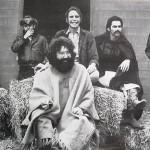
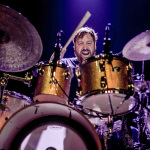

[…] of the band are commemorating that with one more round of shows under their original moniker. Bob Weir, Phil Lesh, Mickey Hart, and Bill Kreutzman will reunite for a trio of shows at Chicago’s […]
[…] of the band are commemorating that with one more round of shows under their original moniker. Bob Weir, Phil Lesh, Mickey Hart, and Bill Kreutzman will reunite for a trio of shows at Chicago’s […]
[…] ^ “Bob Weir & Neil Sedaka: West Meets East (Coast)” at elmoremagazine.com […]